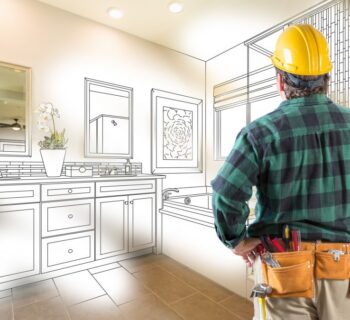Construction dust can be a nuisance for workers, businesses, and the immediate environment. As such, there are several causes of construction dust on a construction site. These causes of dust often fall into three categories of construction dust. These three forms of dust are namely silica dust, low silica dust, and wood dust. Below is a brief explanation of each type of construction dust and a look at how to get rid of dust in the air for a dust-free worksite. To start with, the types of dust in construction include;
Silica Dust
This type of dust is also known as respirable crystalline silica or RCS. It’s created from material that contains silica such as concrete, mortar, and sandstone. You cannot see silica dust with your naked eyes as it appears in ultrafine particles. Unfortunately, when inhaled, silica dust quickly penetrates your lungs damaging the lung tissue. This may lead to fatal respiratory issues. Fortunately, you can learn tips on how to avoid exposure by visiting sites like bosstek.com.
Wood Dust
Wood dust is a carcinogen believed to cause asthma and cancer. Hardwood in particular causes a rare type of nose cancer. Usually, wood dust is caused by softwood, hardwood, and wood-based products such as plywood and MDF. This dust is a major health risk as studies show that more workers in the wood industry are more likely to contract lung cancer.
Lower Toxicity Dust
Lower toxicity type of dust is created when you work on materials with little to no silica material such as gypsum, marble, and limestone. This type of dust is believed to cause chronic lung conditions.
How to Reduce Construction Dust
The three types of construction dust are a health hazard to your workers. Therefore, you need to come up with ways to reduce the dangerous health impacts they cause. Fortunately, there are several methods to do so as listed below.
Use building materials of the right size.
The use of prefab materials will reduce the need for producing silica dust. You won’t require cutting the materials into smaller pieces, thus reducing dust in the worksite.
Use of dust suppression systems
Installing dust suppression systems in your worksite is an excellent idea. Water damps down the clouds of dust in the air. As a result, dust levels are put to a minimum. However, you need to use the right amount of water for this to work great.
Fit your tools directly with Local Exhaust Ventilation (LEV) systems.
Attaching vacuums to suck up dust in your construction tools never go out of style. In doing so, dust is removed immediately after it’s produced. For the vacuum to eliminate the dust efficiently, you have to ensure the amount of the dust is adequate.
Construction dust comes in three forms and neither is healthy for you, your worker, and the environment. Since you now know about the three types of dust and how they come, consider coming up with ways to avoid them. In doing so, you can maintain a safe working environment for everyone.







